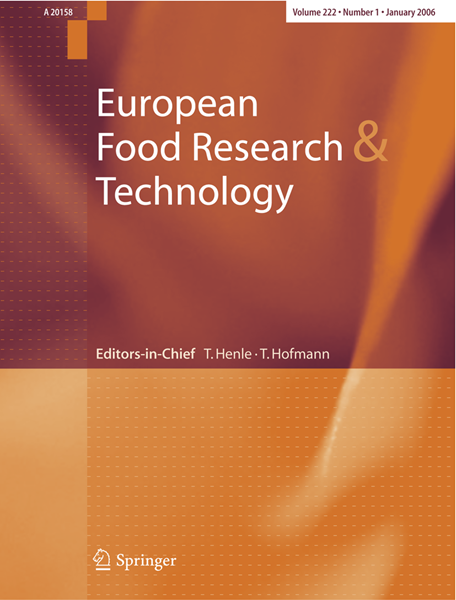Heat-induced gelation of black soldier fly larvae (Hermetia illucens) protein: aggregation and rheological characterization
Abstract
The potential of utilizing black soldier fly larvae (BSFL) protein in food applications requires comprehensive understanding of their techno-functionalities under various processing conditions. This study aimed to investigate the gelling behaviour of BSFL proteins through characterising their aggregation and rheological properties at different temperatures (55–95 °C). The results of turbidity, particle size distribution, polydispersity and molecular weight distribution showed that BSFL protein aggregation was enhanced at higher temperatures. The reduction of zeta potentials and total sulfhydryl groups implied that heat induced conformational changes had taken place through electrostatic interactions and disulfide bonds formation. The changes in secondary structures composition demonstrated that the formation of β-sheet structures plays important role in BSFL protein aggregation. The gelation kinetics and mechanism of BSFL protein might be explained from their thermo-rheological behaviour, which includes partial unfolding, rapid aggregates formation, initial gel formation, gel network sustainment and gel reinforcement steps at different stages of the heating cycle. The variation in viscoelastic properties suggested that heating at higher temperatures aided the formation of BSFL gels with higher strength and elasticity. The power law parameters showed that the stability of heat-induced BSFL gels were greatly enhanced after heating at higher temperatures. Overall, the temperature dependence of BSFL protein aggregation and gelling properties are clearly demonstrated in present study. These results are useful for the selection of appropriate heating conditions to attain specific BSFL protein gel texture.
Graphical abstract


 求助内容:
求助内容: 应助结果提醒方式:
应助结果提醒方式:


